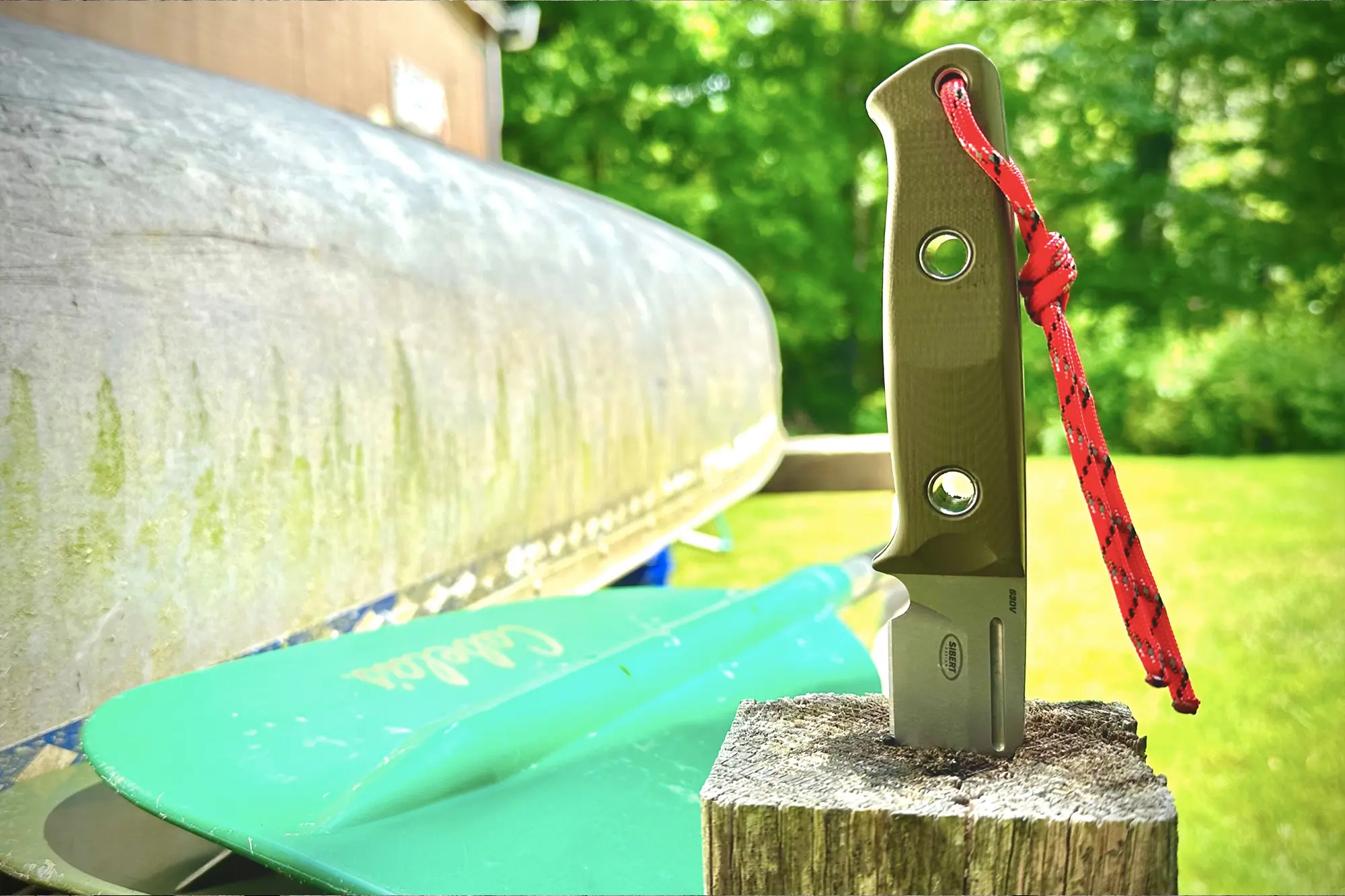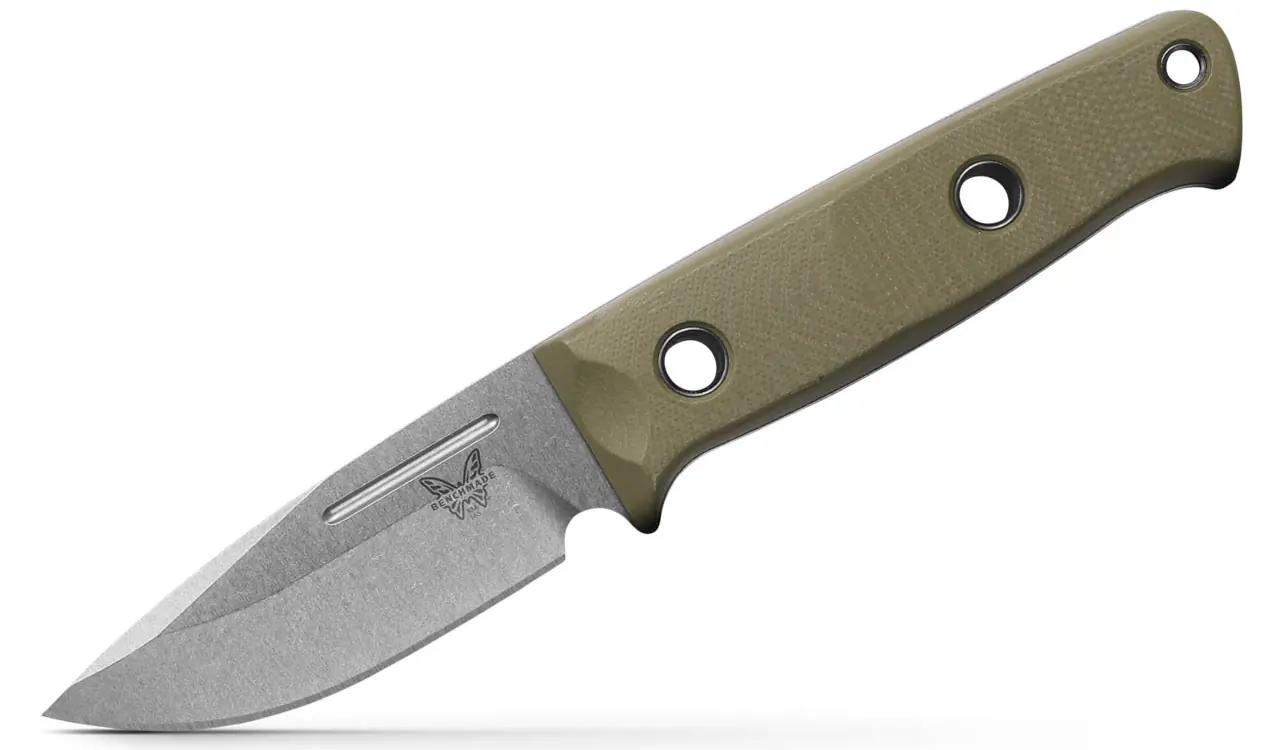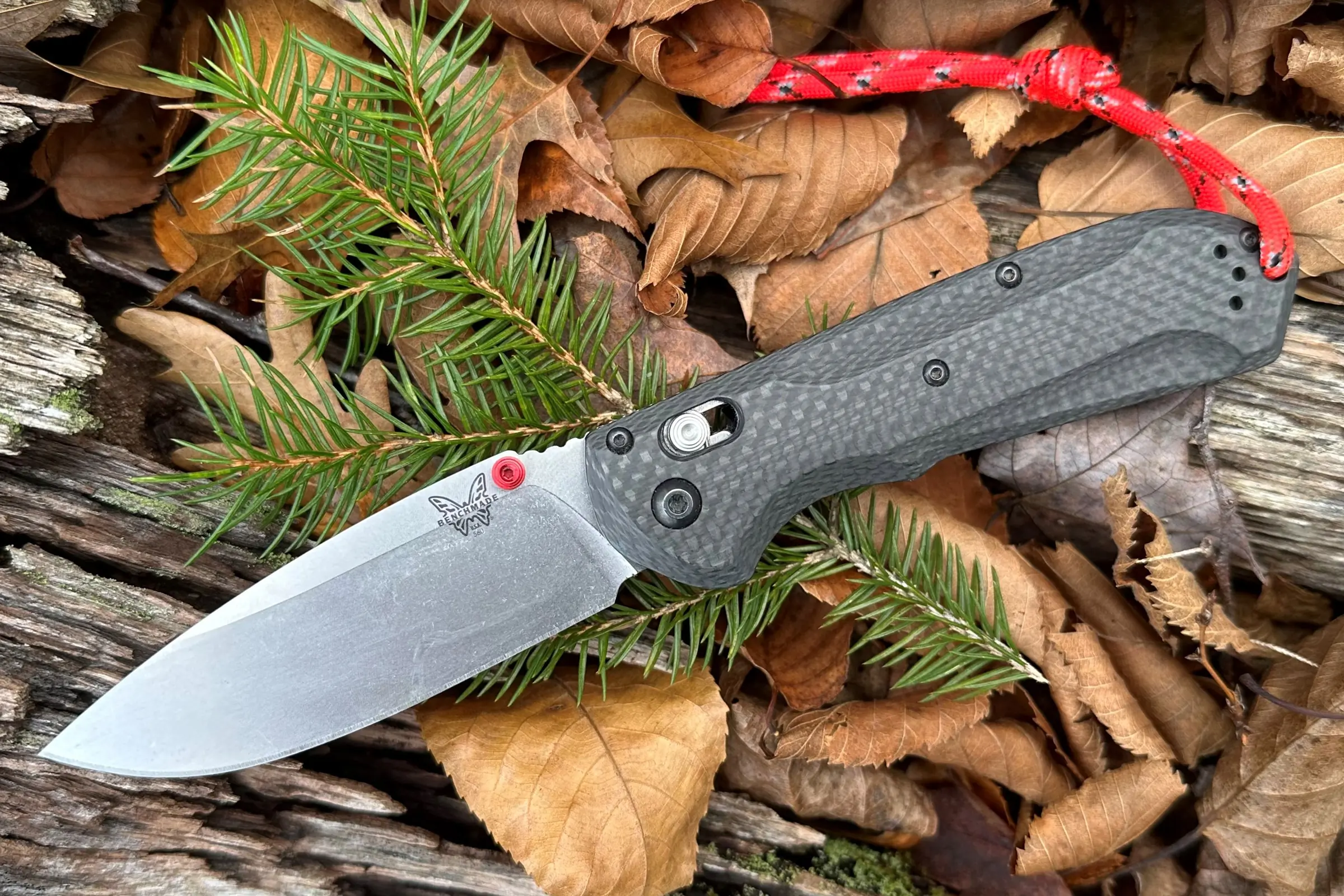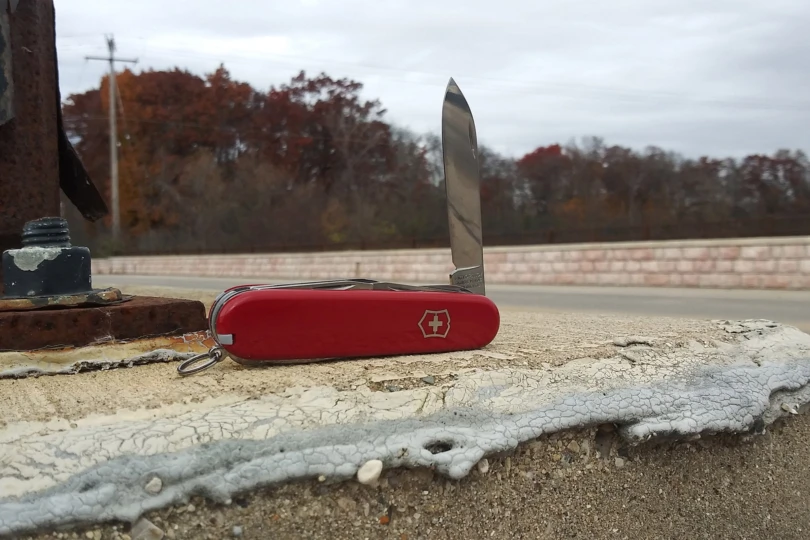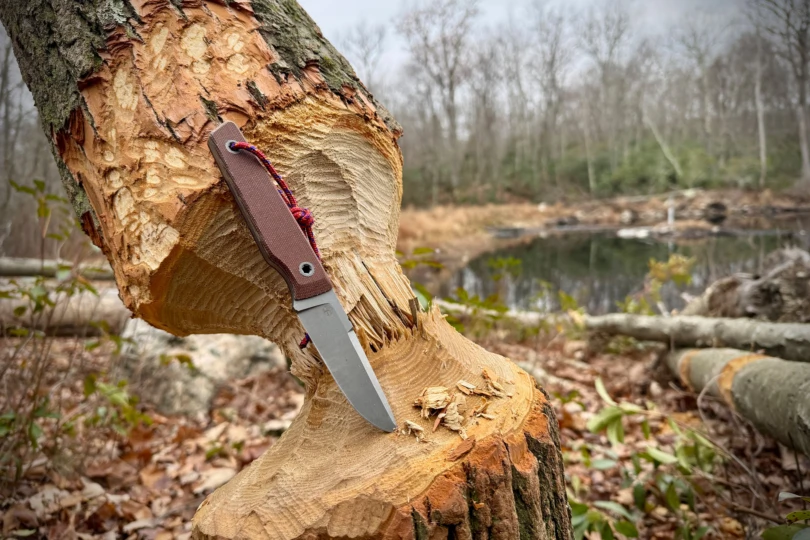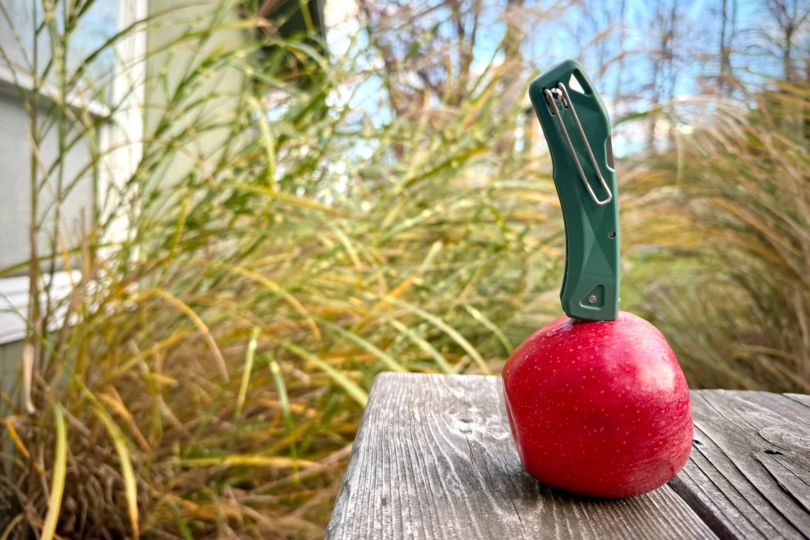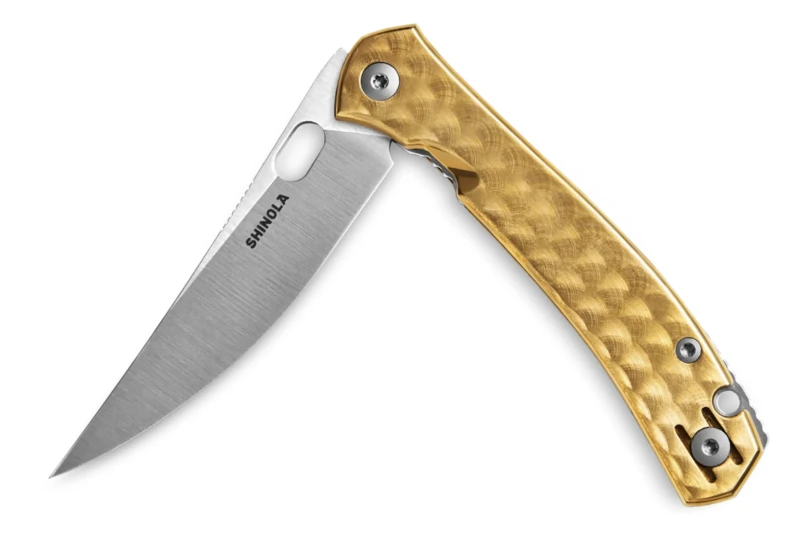From 2011 until a few months ago, Benchmade’s 162 Bushcrafter sufficiently served as the brand’s bushcraft-specific offering.
Designed by knifemaker Shane Sibert, the 162 had an overall length of 9.2 inches and carried a Scandi-ground, drop-point blade, and G10 handle scales. It even came with a leather sheath that had a built-in sleeve for a ferro rod. And perhaps most surprisingly, it used S30V stainless steel for the blade — a move unheard of in the bushcraft space at the time.
Now here we are, 11 years later, and the 162 Bushcrafter is an icon in the knife world — loved by the masses. Eleven years is a long time to have a product unchanged in your lineup, so in March, Benchmade introduced the new 163 Bushcrafter and 165 Mini Bushcrafter. Both retained a majority of the features that made the original 162 so effective (S30V steel, G10 scales, and much of the same geometry).
I had the opportunity to test both new versions of the Bushcrafter, but focused my efforts on the Mini version. With an inch smaller blade and a half-inch shorter handle, I was impressed with its sturdy build and the way it fit into my hand. Not only was I testing a knife that was replacing a legend, but a more compact version that was more EDC-friendly and therefore more universally adaptable.
On paper, the changes Benchmade employed were modest. But in practice, they marked a dramatic improvement in both form and function.
In short: Benchmade’s 165 Mini Bushcrafter is an improvement over an iconic knife that has served us all well for more than a decade. Instead of a full-blown reimagining of the 162 Bushcrafter, the 165 has subtle but notable changes which improve the overall user experience of this new, soon to become icon.
- OAL: 7.58”
- Blade length: 3.38”
- Blade steel: CPM-S30V
- Blade shape: Drop point
- Grind: Flat
- Hardness: 58-60 HRC
- Sheath: Leather
- Carry: Right side
- Weight: 6.45 oz.
- Price: $380
Pros
- CPM-S30V Stainless Steel
- Optimal hand control and fit
- Overall stout build
- Drainage hole in sheath (uncommon in leather)
Cons
- The knife will far outlast the sheath
- The sheath is right-hand only
Benchmade 165 Mini Bushcrafter Review
Unlike most bushcraft knives on the market, the original 162 used S30V premium stainless steel for the blade — a big no-no in the bushcraft world. Or, at least, it was.
An arguable misconception about bushcraft knives was that they needed to be made from carbon steel because carbon steel is tougher than stainless. Therefore, the theory went, it would stand up to the rigors and demands of bushcraft better. However, advancements in metallurgy over the last 20 years have made steels like S30V just as tough, if not tougher than, carbon steels used for knives today.
Additionally, stainless steel has the added benefit of corrosion resistance. This added property gives stainless steel an edge over carbon steel, especially in bushcrafting.
Blade Design
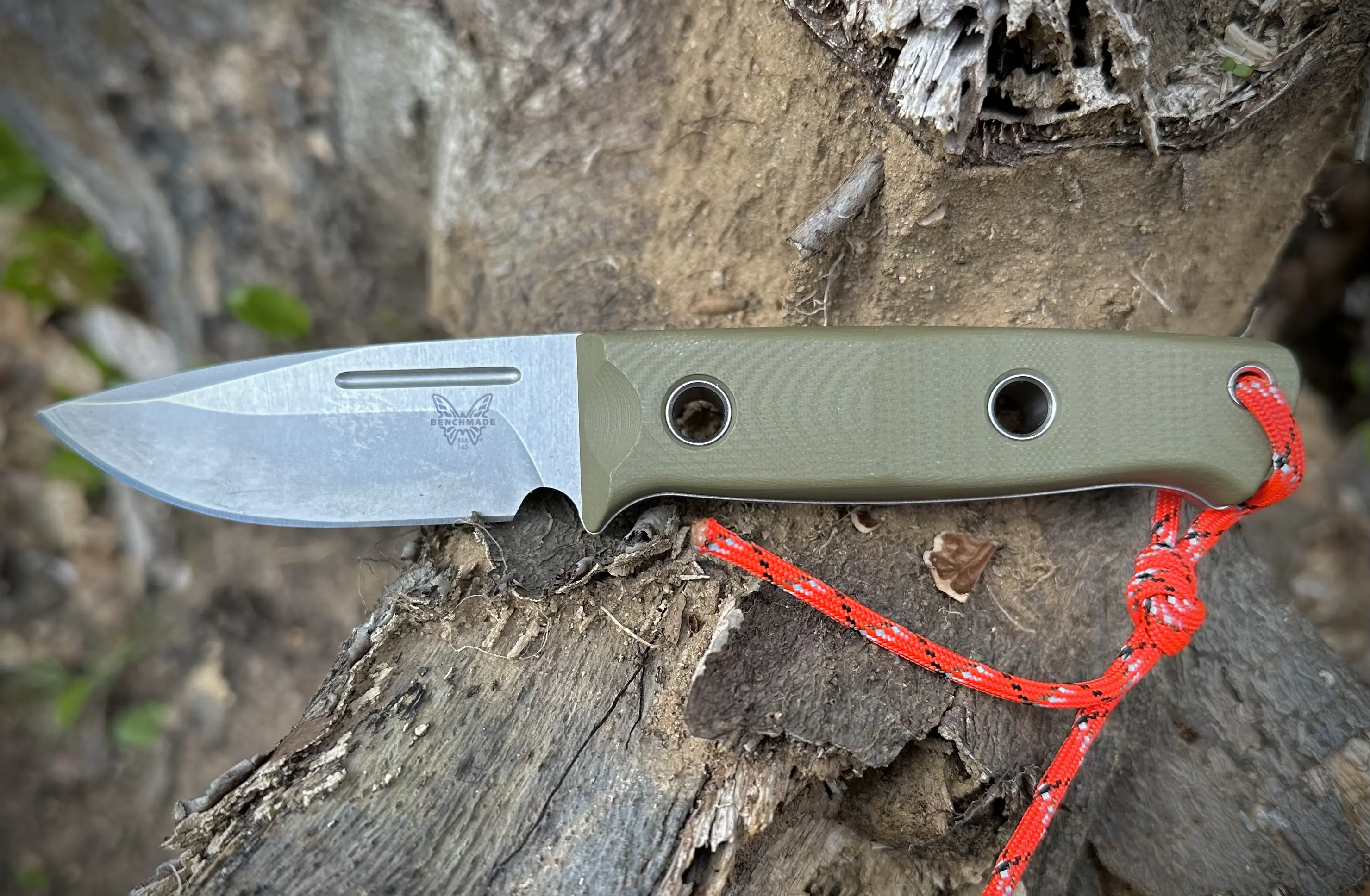
The Benchmade 165 Mini Bushcrafter is a full-tang premium bushcraft-style knife. It uses 0.164-inch-thick S30V blade steel and G10 handle scales. The 165 has a drop-point blade shape with a swedge, or false edge. This marks an improvement over the previous 162 Bushcrafter, which had a Scandi grind.
This new blade shape keeps the tip of the blade in line with the center of the handle, and improves the knife’s overall stabbing and piercing capabilities. This shape and grind combination is also stronger than that found on the 162.
Additionally, the blade on the 165 features a fuller. There are plenty of arguments about what the fuller represents on a blade. Some claim it’s just looks, a byproduct of forging.
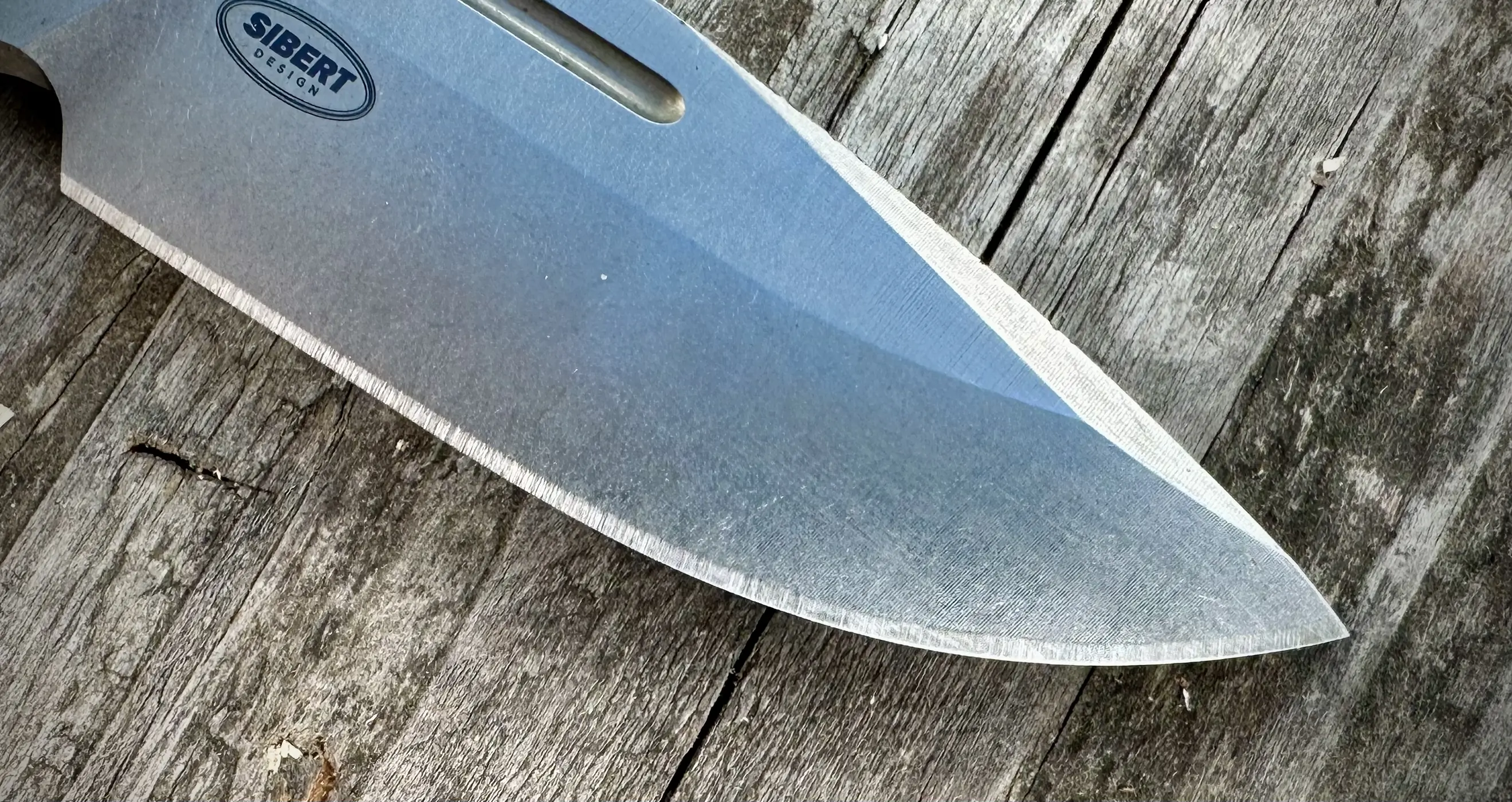



Others claim it allows for blood to flow up and out of a puncture. I’ve found that this feature helps to reduce suction. Whether you’ve got the 165 stabbed into the side of a deer or a sappy tree, it will be easier to pull out because of the fuller.
Handle & Sheath
Like traditional bushcraft knives, the handles on the 165 are thick (0.925 inches) to provide for a sure and secure grip. The handle scales taper at the front and back, allowing the middle to swell and seat into the crevice of your palm incredibly well.
Additionally, there is a small guard at the front and back of the handles. This keeps your hand from sliding back and forth. Although, the grip of the G10 should keep your hand right where it belongs.
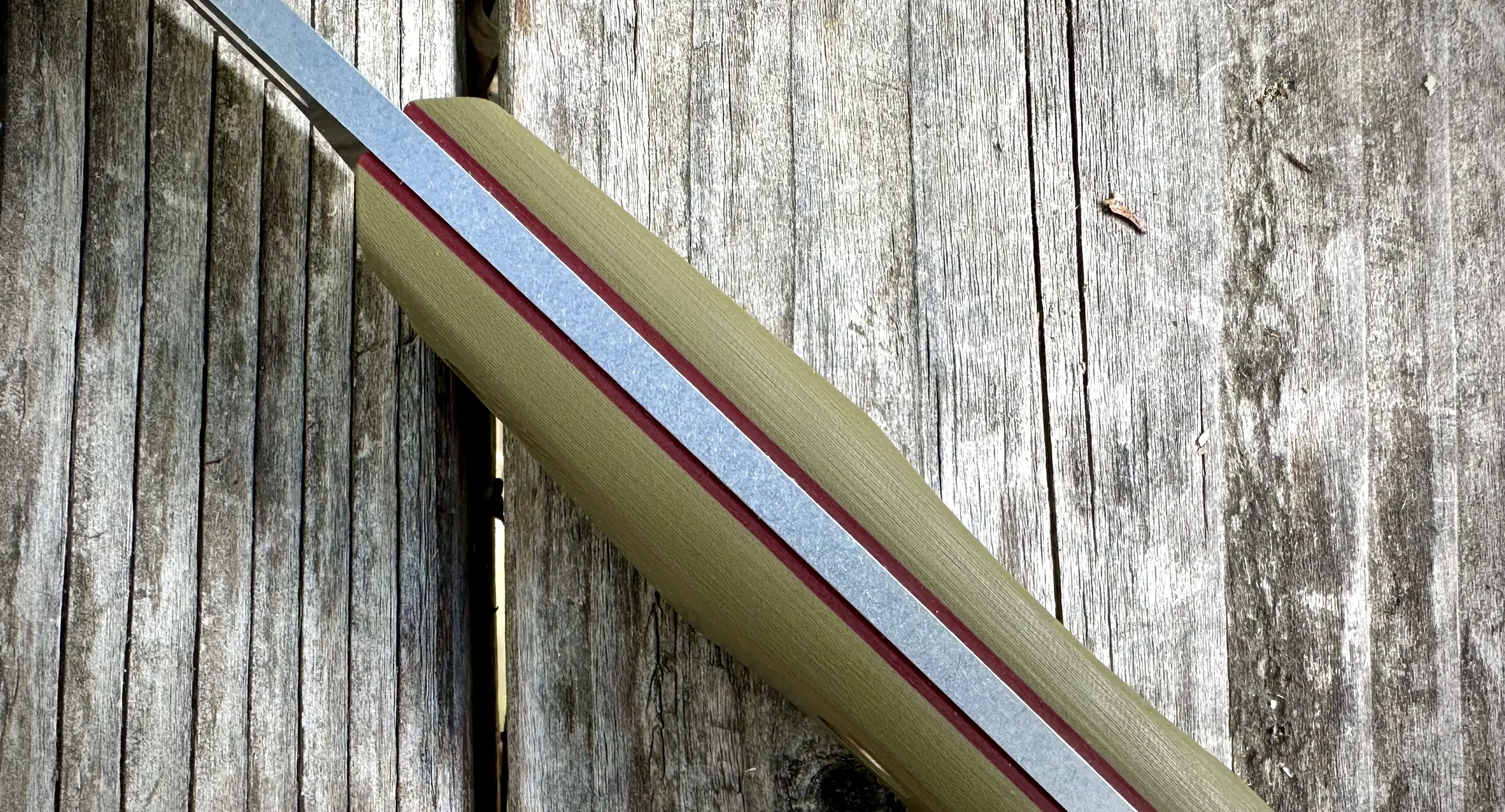



Aside from the much-appreciated lanyard hole, there are two other holes in the handle of the 165. Benchmade may have inserted these to decrease the weight of the knife and increase its balance. The holes might also work to fashion the knife into a spear or use it as an anchor. I know I’m thinking outside of the box here, but that’s what bushcraft and survival are all about.
The sheath for the 165 is dark brown, full-grain leather. And it has a sleeve for a ferro rod. I found that the Uberleben Hexå fits well in the slot and throws a serious spark.
The only issue folks may have with the sheath is that it is strictly for right-hand wear only. But, so are a majority of the leather sheaths out there in the world today. As a left-handed person, I’ve just come to realize I need to deal with it. It hasn’t proven to be a big deal with this knife or any others.
Mini Bushcrafter vs. Full Size
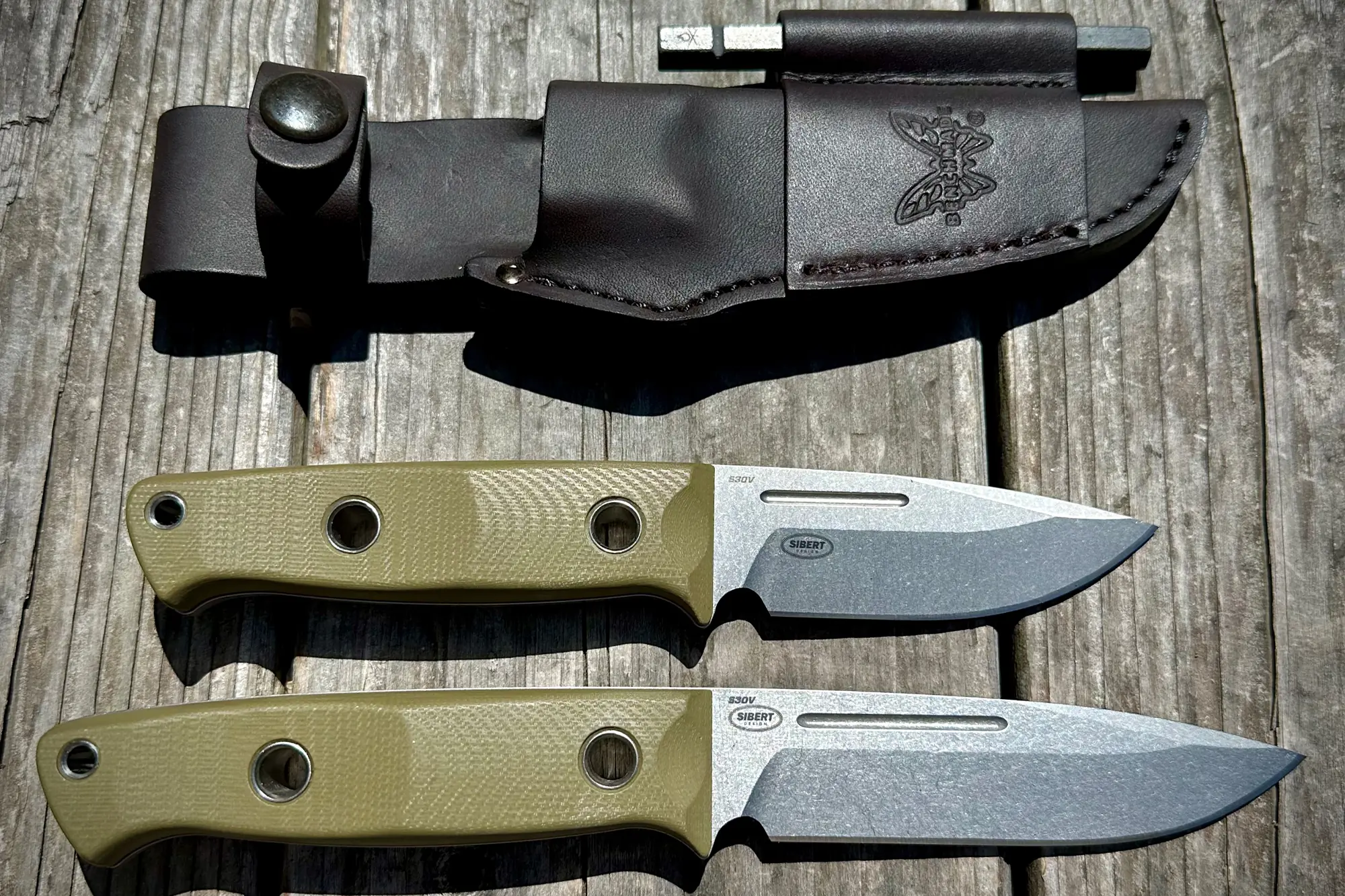



It’s true. I received both new Bushcrafter models to test. But the Mini appealed to me more in form and function. The biggest reason I chose the 165 Mini Bushcrafter over the 163 Bushcrafter was the way it fit in my hand. The Mini provided a considerable, balanced grip and ultimate control over the knife.
I have a wider hand, but the Mini’s handle length allowed my four fingers to sit in between the fore and aft guards without much wiggle room. On the full-sized 163, I felt there was more room than I needed.
First Impressions
Aside from being a shorter knife, the changes on the 165 Mini — though small — are significant.
Foremost among them is the decision to abandon the Scandi-grind. This has been basically a religious requirement for bushcraft knives. Bushcraft folks will spend hours extolling the benefits of a good Scandi grind. But that grind is not as effective or as strong as the high flat grind and swedge on both new Bushcrafter models.
In his book Bushcraft: Outdoor Skills and Wilderness Survival, Mors Kochanski states, “All general-use knives should have the blade tip close to the profile center-line of the handle.”
This new blade shape and grind retains and improves upon this aspect, which makes for easy control of the blade when drilling, stabbing, and puncturing — as well as detail work, like whittling and shaping.
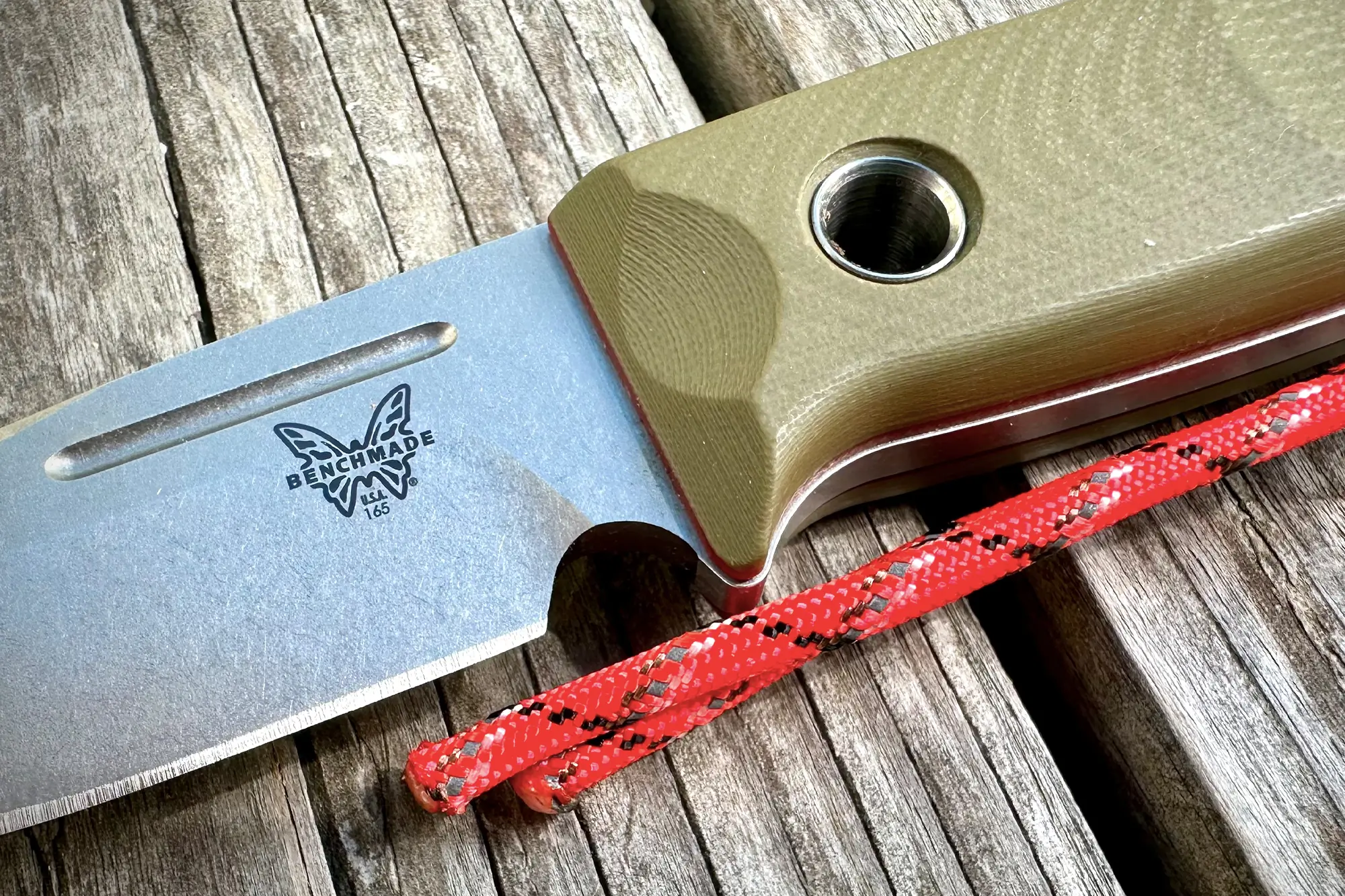



The second notable change in the new Bushcrafter models is the inclusion of a notch at the back of the blade edge. This accommodates a ferro rod.
There are far too many people ruining their blade edges by running a ferrocerium rod across them. The addition of this notch should help solve this. If not, the spine of the blade was left unbroken and also serves as an effective surface to use a ferro rod.
The third and final notable addition to the new Bushcrafter models was the inclusion of the fuller. I’ve already gone over what I believe the function of the fuller is. When you consider that a knife designed for the wilderness can be used anywhere and in any situation, including processing meat or stabbing into a juicy tree, you start to understand the benefits of the fuller.
In the Field




Over time, I have encountered many different knife shapes, blade grinds, blade steels, and more. But it is a rare joy when you can bear down on a knife so much that it can shear curly bits of a thick branch with a loud, luscious shearing sound. I literally spent an hour with the Mini Bushcrafter making fur sticks and tinder piles just to experience that whole scene.
Beyond that, one of my favorite aspects of this knife is its relatively compact size. It’s easier to carry, easier to control, and does just as much as the full-sized model will do. It’s spring in New England, so that means everything is wet. So, I want to make sure I have full confidence in the grip I have on the knives I am using for heavy work. Not once in 2 months was I worried about my grip on the 165 or my control over it.




The one thing I was worried about was the overall thickness of the handle. I have a lot of experience with the original 162 Bushcrafter. It was a beefy knife with a thick handle, but there was a lot more contouring on that version over the two new Bushcrafters.
But, as I learned in my testing, the 162, 163, and 165 are all the same thickness. Though the 163 and 165 lack some of the overall roundness found in the handle of their predecessor, I am pleased and happily surprised with how well the 165 fits and feels.
In Conclusion
Overall, I think a knife like this forces people to do more with it. My impressive mound of wood shavings aside, I found myself reaching for my pocket knife a heck of a lot less when I had the Mini Bushcrafter on my hip.
It’s also not as conspicuous as a full-sized knife, which helps it blend into the EDC world a little more than you might expect. I don’t feel like the elephant in the room is hanging off my belt when I walk into the gas station for my trail-side, over-processed jerky and Muscle Milk. I didn’t have any reservations about carrying around the 165.
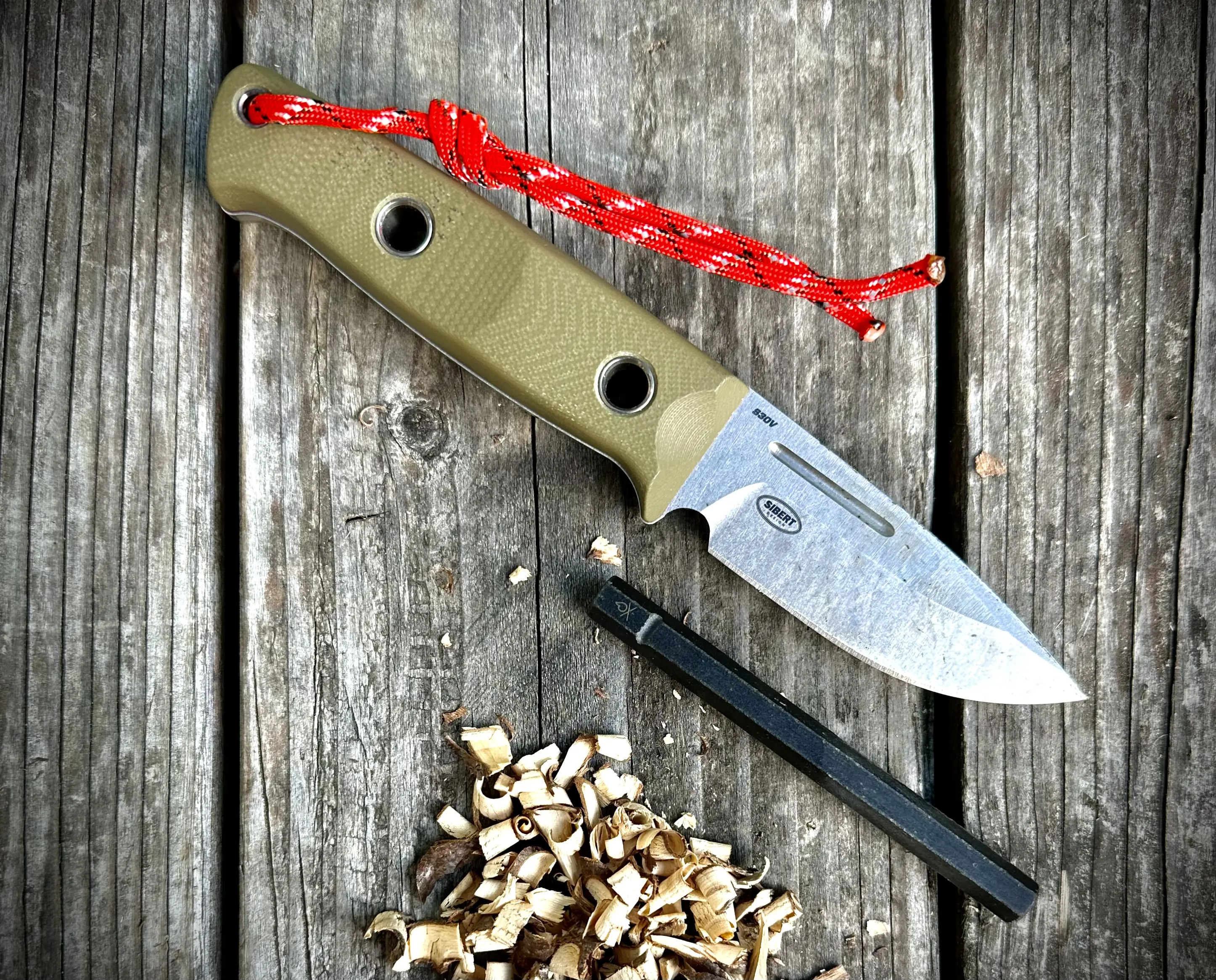



After 11 years, it was time for Benchmade to retire the 162. The 165 Mini Bushcrafter stands as a shining example that big things come in small doses. Aside from its smaller stature, the few changes that were made from the original have marked performance improvements that create a better overall experience.
